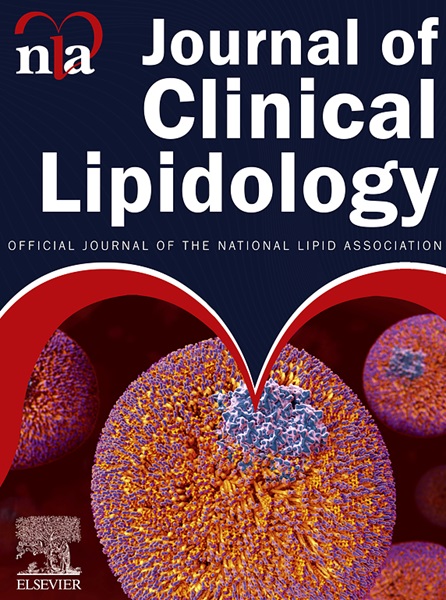Global trends in sitosterolemia research: A bibliometric and visualization analysis
IF 4.6
3区 医学
Q2 PHARMACOLOGY & PHARMACY
引用次数: 0
Abstract
BACKGROUND
Sitosterolemia is a rare autosomal recessive genetic lipid metabolism disorder characterized by high concentrations of plant sterols in plasma and tissues, which can cause a variety of clinical symptoms, such as xanthomatosis, atherosclerosis, and arthritis. In recent years, more and more scholars have begun to pay attention to the special disease of sitosterolemia. Bibliometric analysis, as a method of quantitative analysis of scientific literature, can help us systematically understand the research status and development trends in this field. In this study, CiteSpace software was used to analyze the literature on sitosterolemia.
SOURCES OF MATERIAL
Publications on sitosterolemia were collected from the Web of Science Core Collection (WOSCC) and PubMed. The bibliometric tools CiteSpace software and Microsoft Excel were used to identify the historical features, the evolution of active topics, and emerging trends in the sitosterolemia field.
ABSTRACT OF FINDINGS
A total of 885 publications were retrieved and 416 publications were included in the analysis after the removal of duplicates. From 1974 to 2024, the number of publications and the related citations show an obvious fluctuating trend. The top 3 institutions with the most publications were the University of Bonn, the University of Texas System, and the University of Texas Southwestern Medical Center Dallas; the top 3 authors with the most publications were Patel SB, Tada H, and Salen G. The research hotspots on sitosterolemia mainly focus on phytosterols, whole exome sequencing, and lipid metabolism. The top 5 keywords by frequency of occurrence were “sitosterolemia,” “humans,” “dietary-cholesterol,” “cholesterol,” and “absorption.” There is extensive scientific research cooperation among the sitosterolemia research institutions. Genetic research remains an important and ongoing area of interest in the study of sitosterolemia, given the fundamental role of genetic mutations in the disease's pathogenesis.
CONCLUSION
The findings based on the bibliometric studies provide the current status and trends in sitosterolemia research and may help researchers identify hot topics and explore new research directions in this field.
谷固醇血症研究的全球趋势:文献计量学和可视化分析。
背景:谷甾醇血症是一种罕见的常染色体隐性遗传脂质代谢疾病,其特征是血浆和组织中高浓度的植物甾醇,可引起多种临床症状,如黄瘤病、动脉粥样硬化和关节炎。近年来,越来越多的学者开始关注谷固醇血症这一特殊疾病。文献计量学分析作为一种对科学文献进行定量分析的方法,可以帮助我们系统地了解该领域的研究现状和发展趋势。本研究采用CiteSpace软件对谷固醇血症相关文献进行分析。资料来源:关于谷甾醇血症的出版物收集自Web of Science Core Collection (WOSCC)和Pubmed。使用文献计量学工具CiteSpace软件和Microsoft Excel来识别谷固醇血症领域的历史特征、活跃话题的演变和新兴趋势。结果摘要:共检索文献885篇,剔除重复文献后纳入分析文献416篇。从1974年到2024年,论文发表数和相关被引数呈现出明显的波动趋势。发表论文最多的前三所大学分别是波恩大学、德克萨斯大学系统和德克萨斯大学达拉斯西南医学中心;发表论文最多的前3位作者分别是Patel, Shailendra B, Tada Hayato和Salen, G.谷甾醇血症的研究热点主要集中在植物甾醇、全外显子组测序和脂质代谢方面。出现频率最高的5个关键词是“谷甾醇血症”、“人类”、“膳食胆固醇”、“胆固醇”和“吸收”。谷甾醇血症研究机构之间开展了广泛的科研合作。考虑到基因突变在谷甾醇血症发病机制中的基本作用,基因研究仍然是谷甾醇血症研究中一个重要的和正在进行的领域。结论:基于文献计量学的研究结果提供了谷甾醇血症研究的现状和趋势,有助于研究人员识别该领域的热点和探索新的研究方向。
本文章由计算机程序翻译,如有差异,请以英文原文为准。
求助全文
约1分钟内获得全文
求助全文
来源期刊
CiteScore
7.00
自引率
6.80%
发文量
209
审稿时长
49 days
期刊介绍:
Because the scope of clinical lipidology is broad, the topics addressed by the Journal are equally diverse. Typical articles explore lipidology as it is practiced in the treatment setting, recent developments in pharmacological research, reports of treatment and trials, case studies, the impact of lifestyle modification, and similar academic material of interest to the practitioner.
Sections of Journal of clinical lipidology will address pioneering studies and the clinicians who conduct them, case studies, ethical standards and conduct, professional guidance such as ATP and NCEP, editorial commentary, letters from readers, National Lipid Association (NLA) news and upcoming event information, as well as abstracts from the NLA annual scientific sessions and the scientific forums held by its chapters, when appropriate.

 求助内容:
求助内容: 应助结果提醒方式:
应助结果提醒方式:


